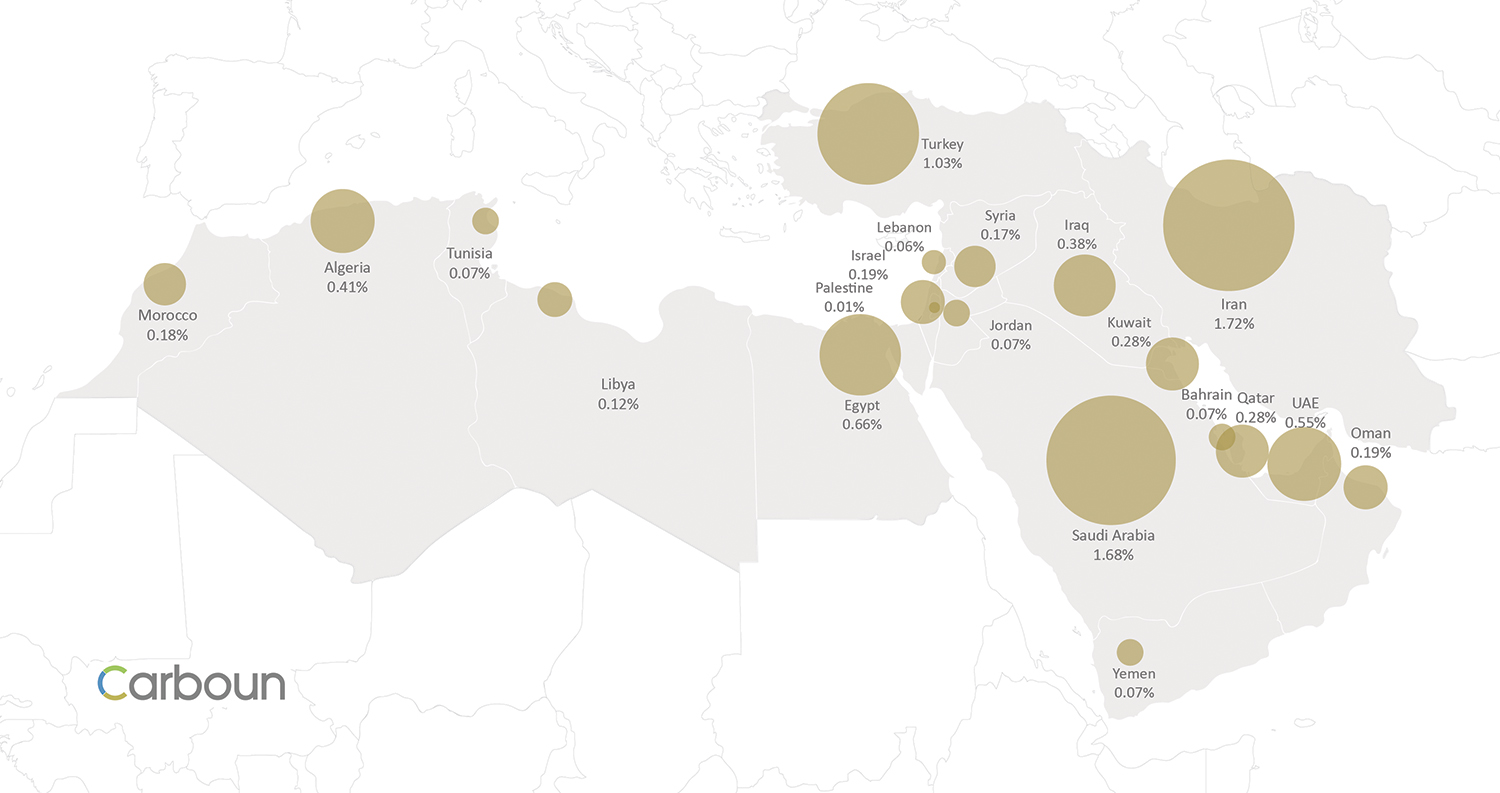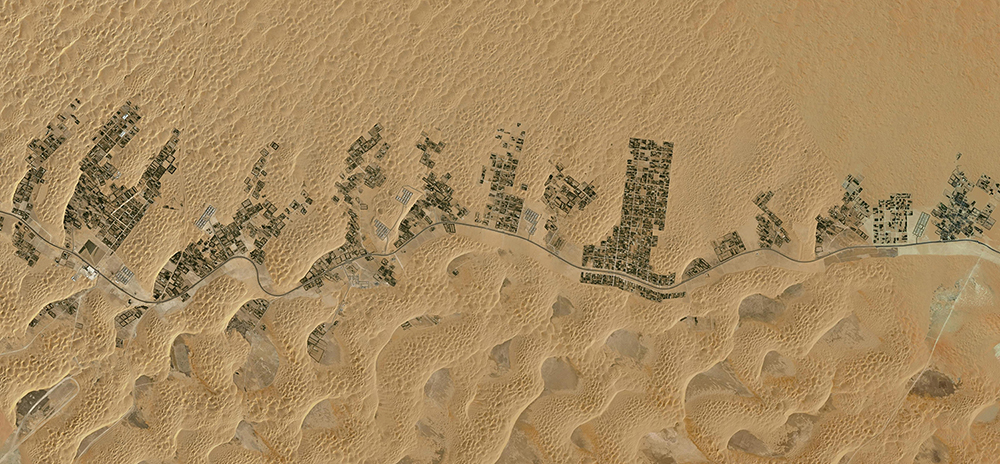|
|

Karim Elgendy
Following the UNFCCC’s 23rd Conference of Parties in Bonn (COP23), Carboun has released a visual guide to climate change in the Middle East and North Africa region. The visual guide comprises two infographics covering carbon emissions in the Middle East and North Africa and climate change impact. The aim of this infographic is to explain carbon emissions from the Middle East and North Africa region in the global context, especially how they relate to economic development, climate change, and climate committments under the Paris Agreement. This infographic is the first of two representing the visual guide to climate change in the Middle East and North Africa region. The second partcan be viewed here.The guide, which was researched and designed by Karim Elgendy, was based on raw data provided by a variety of sources and datasets (all of which are listed on the infographics). It represents an update of a previous visual guide published in 2011, which also aimed to contextualize regional carbon trends. Copyrights for all infographics are reserved for Carboun. No republishing or reproduction of this infographic or part thereof is allowed in digital, print, or other formsts without prior written consent from Carboun.
Continue reading Climate Change in the Middle East and North Africa : Carbon Emissions
 National share of 2014 global carbon emissions across the Middle East and North Africa region, including Turkey, Iran, and Israel. Copyrights: Carboun Karim Elgendy
The two-week COP 21 climate conference in paris (also known as the 21st Conference of Parties to the United National Framework Convention for Climate Change ) ended on Saturday 12 December with an adopted agreement covering 195 countries, and providing a framework for voluntary efforts to significantly reduce carbon emissions starting 2020.
Continue reading From Paris to Marrakech and Beyond
Karim Elgendy
 Liwa date farms benefit from some of the freshest ground water in the UAE. Copyrights: Google Those who visit the Middle East and North Africa from more temperate climates are often struck with how hot and dry the region is, and how scarce its rainfall. Some wonder why cities became established here, and how they continue to exist despite the lack of renewable freshwater.
These concerns are not entirely groundless. Yet these cities’ existence is not in any way miraculous: it’s merely an example of what can happen if cities fail to strike a sustainable balance between growth and limited resources.
Continue reading How Sustainable is Your Oasis?: A Review of Water Resources in Middle East Cities

Karim Elgendy
In celebrating this year’s World Green Building Week, Carboun has released a visual guide to energy use in buildings with the goal of explaining the overall state of energy use in the region and the significance of buildings as a major sector in energy consumption. It also aims to comparatively explain the nuances of the major trends of energy use in buildings as a baseline analysis for further research. The visual guide, which was researched and designed by Karim Elgendy with additional contributions from a small research team, was based on raw data obtained from the International Energy Agency and the World Bank. Copyrights for all infographics are reserved for Carboun. No reproduction or republishing of any infographic or part thereof is permitted without prior written consent from the author.
Continue reading A Visual Guide to Energy Use in Buildings in the Middle East
Hiba Abu Al Rob, Majd Jayyousi, Khaled Abu Ajwa, and Rashed Al Nasa’a
The water situation in Jordan is in need of dramatic changes to ensure positive outcomes in national water resource management. Already nearing crisis levels, it is estimated that any slight change in current levels or quality of water will have a significant effect on agriculture, industry, nutrition, health and ultimately the security of the Kingdom.
This is a story that everyone has heard before. It is a story at the heart of Jordan’s neighborhoods and villages where ramifications are felt every day, affecting the lives of thousands of individuals. Men and women, both young and old, have learned the meaning of water scarcity the hard way, as places and communities they call home have transformed into daily battlegrounds of uncertainty and disappointment. To tell the story of water in Jordan, one would travel far and wide, yet this is an attempt to tell the story through three tales of struggle, determination, and success in facing one of the biggest challenges this century.
 The fields surrounding the village of Al Mughayyir, in northen Jordan, bear witness to the effect of water scarcity which has created a shift in the social pattern of local villages, with many abandoning agriculture and farming and moving to neighboring cities. Photo Copyrights Mohammad Asfour Continue reading Stories of Water Scarcity in Jordan
Guy El Khoury
A year ago, in March 2011, a tsunami swept parts of the eastern coast of Japan and caused a major accident at the Fukushima-Daiichi power plant, leading to widespread radioactive material leakage and a sharp increase in radioactivity in nearby areas. Being the most notable accident since Chernobyl, it restarted the debate on nuclear energy option both in Japan and around the world. In Germany, this debate soon led to a decision to terminate the federation’s civilian nuclear program with a commitment to develop renewable energy alternatives, as well as additional thermal power plants, to cover the energy shortfall. A similar debate on nuclear energy has also emerged in the Middle East and North Africa region (MENA) where a number of countries have been exploring nuclear energy option for years, but have not been able to turn their nuclear ambitions to realities due to their lack of technical capability, fear of nuclear proliferation, and lack of sufficient financial resources. This debate was further brought to the fore with the recent move by the United Arab Emirates (UAE) to develop a civilian nuclear program and the operation of the Bushehr plant in Iran, and has proven to be quite divisive with strong positions arguing for and against nuclear energy
Continue reading Nuclear Desert

Karim Elgendy
Following on Carboun’s recent article discussing the two trends of energy and carbon emissions in the Arab World. Carboun has recently released a visual guide to energy and emissions with the goal of explaining the fundamentals of energy use in the region and how it relates to carbon emissions, economic development, climate change, and renewable energy. The guide, which was researched and designed by Karim Elgendy, was based on raw data provided by the World Bank and the World Resources Institute. It aims to explain the regional trends in local details but within the global context. Copyrights for all infographics are reserved for Carboun. No reproduction or republishing of any infographic or part thereof without prior written consent from Carboun.
Continue reading A Visual Guide to Energy and Emissions in the Middle East
|
|






